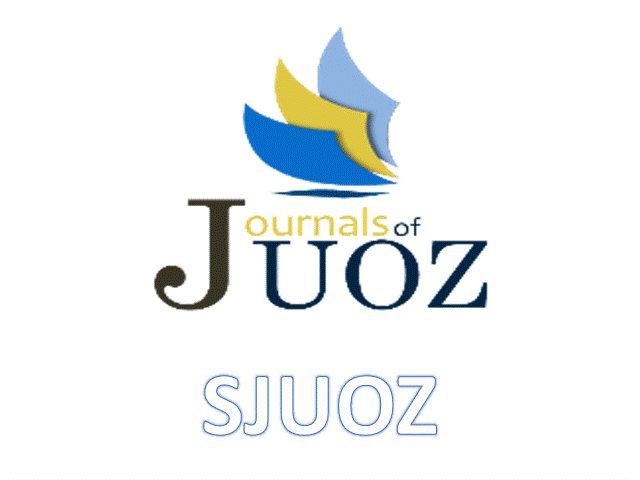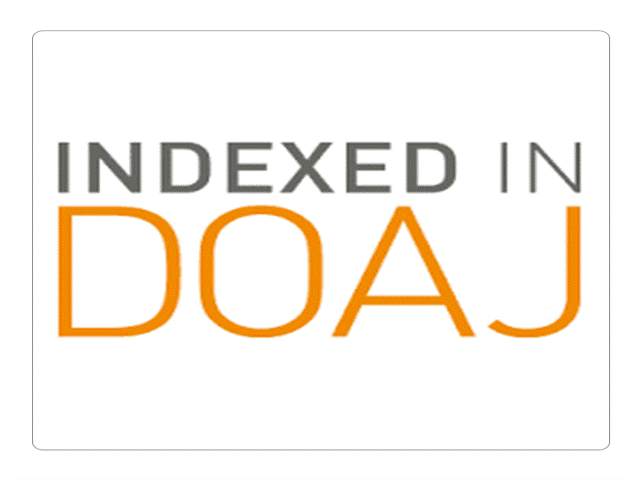Study of Some Risk Factors in Patients With Untreated Breast Cancer in Erbil City
Keywords:
Breast cancer, risk factors, epidemiological studyAbstract
This study was carried out in Rizgary and Hawler Teaching hospital in Erbil city, from the period of August 2010 to June 2011. A total of 115 women patients with breast tumor (55 malignant and 60 benign) and 40 females as a control group with age ranged (18-71) in both patients and control group were participated, they were matched with patients by age group without any history of breast problem or neoplastic disease and not had any other cancer. Data were collected by interview with patients and control group, a questioner form were provided to each patients which include (age, age at menarche, regularity of menstruation, etc.) and clinical file made for each patient who attends to these two hospitals for each patients for the first time, in spite of histopathological diagnosis. Results indicated obvious relation between risk factor and breast cancer (BC), among these factors is the age; the most frequent age for breast cancer was that at age group (38- 47).Percentage of patients starting age menarche after 12 year was higher when compared with patients starting at or before 12 year. The results showed higher percentage of BC in patients who have regularity menses when compared with irregular menstrual cycle. Age of first pregnancy in 20 years and greater which was higher than other group. The results indicated that the percentage of BBD patients which diagnosed premenopausal was higher than postmenopausal. Higher percentage of breast feeding found in BC patients when compared with bottle feeding. Oral contraceptive pills users occupied higher percentage in patients. Patients which not used hormone replacement therapy (HRT) have higher percentage when compared with patients used HRT. About half of the patients recorded positive family history. The numbers of patients diagnosed as stage third and fourth were higher compared with those stage two, unknown and first stage. According to the type of benign breast disease, the unknown cause showed higher percentage when compared with other types.
Downloads
References
• Berkey, C. S.; Frazier, A. L.; Gardner, J. D. and Colditz, G. A. (1999). Adolescence and breast carcinoma risk. Cancer, 85, 2400- 2409.
• Bernstein, L. (2002). Epidemiology of endocrine related risk factors for breast cancer. Journal of Mammals Gland Biology and Neoplasia, 7: 3- 15.
• Broeders, M. J. and Verbeek, A. L. (1997). Breast cancer epidemiology and risk factors. Quantitative Journal of Nuclear Medicine, 41(3), 179-188.
• Dahooz, Z.K. and Al-Hawaz MH. (2005). Changes in the Etiological Factors Pattern of Breast Cancer in Basrah. Basrah Journal of Surgery, 11(2), 71- 77.
• Den Tonkelaar, I. and de Waard, F. (1996). Regularity and length of menstrual cycles in women aged 41–46 in relation to breast cancer risk: Results from the DOM-project. Breast Cancer Research and Treatment, 38, 253– 258.
• Downing, A.; Prakash, K.; Gilthorpe, M.S.; Mikeljevic, J.S. and Forman, D. (2007). Socioeconomic background in relation to stage at diagnosis, treatment and survival in women with breast cancer. British Journal of Cancer, 96(5), 836–840.
• Dumitrescu, R.G. and Cotarla, I. (2005). Understanding breast cancer risk, where do we stand in 2005? J. Cell Molucular and Medicine, 9: 208- 221
• Ebrahimi, M.; Vahdaninia, M. and Montazeri, A. (2002). Risk factors for breast cancer in Iran: a case control study. Breast Cancer Research, 4(5),10-14.
• Erlandsson, G.; Montgomery, S.M.; Cnattingius, S. and Ekbom, A. (2003). Abortions and breast cancer: record based case control study. International Journal of Cancer, 103 (5), 676- 679.
• Helmrich, S.P.; Shapiro, S.; Rosenberg, L.; Kaufman, D.W.; Slone, D.; Bain, C.; Miettinen, O.S.; Stolley, P.D.; Rosenshein, N.B.; Knapp, R.C.; Leavitt, T. Jr.; Schottenfeld, D.; Engle R.L. and Levy, M. (1983). Risk factors for breast cancer. American Journal of Epidemiology, 117 (1), 35- 45.
• Henderson, B. E.; Pike, M. C.; Bernstein, L. and Ross, R. K. (1996). Breast cancer: In Cancer Epidemiology and Preventation. (2nd ed). Schottenfield, D. and Fraumeni, J. F. Oxford University Press.
• Ibarluzea, J. M.; Ferna´ndez, M. F.; Santa-Marina, L.; Olea-Serrano, M.; Rivas, A.; Aurrekoetxea, J.J.; Expo´ sito, J.; Lorenzo, M.; Torne, P.; Villalobos, M., Pedraza, V.; Sasco, A.J. and Olea, N. (2004). Breast cancer risk and the combined effect of environmental estrogens. Cancer Causes and Control, 15: 591– 600.
• Iraqi Cancer Registry (2005). Iraqi Cancer Board, Iraqi Cancer Registry, Ministry of Health, Baghdad Iraq.
• Iraqi Cancer Registry (2007). Iraqi Cancer Board, Iraqi Cancer Registry, Ministry of Health, Baghdad Iraq.
• Jemal, A.; Bray, F.; Center, M.M.; Ward, E.; Forman, D. and Ferlay, J. (2011). Global Cancer Statistics. Cancer J. Clin.61:69– 90.
• Kelsey J.L. (1993). Breast cancer epidemiology. Epidemiology Review, 15(1), 256-263.
• Khalid, S.; Hwang, D. and Babichev, Y. (2009). Evidence for a tumor promoting effect of high-fat diet independent of insulin resistance in HER2/ Neu mammary carcinogenesis. Breast Cancer Research and Treatment, 122(3), 647- 659.
• Lipworth, L. (1995). Epidemiology of breast cancer. European Journal of Cancer Review, 4:7-30.
• Majid, R. A.; Muhammed, H.A.; Hazha, M.; Heshu, S.; Rekawt, R. and Michael, H. (2010). Breast cancer in kurdish women of northern Iraq: Incidence, clinical stage, and case control analysis of parity and family risk. British Medical Cancer Women’s Health, 9(1), 33- 43.
• Marchbanks, P.A.; McDonald, J.A.; Wilson, H.G.; Folger, S.G.; Mandel, M.G.; Daling, J.R.; Bernstein, L.; Malone, K.E.; Ursin, G.; Strom, B. L.; Norman, S. A.; Wingo, P. A.; Burkman, R. T.; Berlin, J. A.; Simon, M. S.; Spirtas, R. and Weiss, L.K. (2002). Oral contraceptives and the risk of breast cancer. National England Journal of Medicine, 346 (26), 2025- 2032.
• Martini, F.H.; Ober, W.C.; Garrison, C.W.; Welch, K. and Hutchings, R. (2006). Fundamentals of anatomy and physiology. (7th ed). Pearson Benjamin Cummings. San Francisco.
• McPherson, K.; Steel, C.M. and Dixon J.M. (2000). Breast cancer-epidemiology, risk factors, and genetics. British Medical Journal, 321, 624- 628.
• McTiernan, A. (1997). Exercise and breast cancer time to get moving? National England Journal of Medicine, 336(18), 1311- 1312.
• Montazeri, A.; Ebrahimi, M.; Mehrdad, N.; Ansari, M. and Sajadian, A. (2003). Delayed presentation in breast cancer: A study in Iranian women. BMC Women's Health, 3:4- 8
• Newcomb, P.A.; Storer, B.E.; Longnecker, M.P.; Mittendorf, R.; Greenberg, E.R. and Willett, W.C. (1996). Pregnancy termination in relation to risk of breast cancer. Joint of American Medical Association, 275 (4), 283- 287.
• Norsa’adah, B.; Rusll, B.N.; Imran, A.K.; Nalng, I. and Winn, T. (2005). Risk factors of breast cancer in women in Kelanton, Malaysia. Singapore Medicine Journal, 46(12), 698- 705.
• Palmer, J.R.; Wise, L.A.; Horton, N.J.; Adams- Cambell, L.L. and Rosenberg, L. (2003). Dual effect of parity on breast cancer in African American women. Journal of National Cancer Institute, 95, 478- 483.
• Parazzini, F.; La-Vecchia, C.; Negri, E.; Franceschi, S. and Tozzi, L. (1993). Lifelong menstrual patterns and risk of breast cancer. Oncology, 1993, 222–250.
• Patrick, S. (2007). The Breast cancer epidemic: Modeling and forecasts based on abortion and other risk factors. Journal of American and Physical Surgery, 12(3), 10- 18.
• Pharoah, P.D.; Day, N.E.; Duffy, S.; Day, N.; Duffy, S.; Easton, D. and Ponder, B. (1997). Family history and the risk of breast cancer: A systematic review and meta-analysis. International Journal of Cancer, 71, 800- 809.
• Porch, J.V.; Lee, I.M.; Cook, N.R.; Rexrode, K.M. and Burin, J.E. (2002). Estrogen- progestin replacement therapy and breast cancer risk: The Women's Health Study (United States). Cancer Causes and Control, 13 (9), 847- 854.
• Rennert, G. (2009). Breast cancer. In cancer incidence in the four member countries (Cyprus, Egypt, Israel, and Jordan) of the Middle East cancer consortium (MECC) compared with US SEER volume chapter 8. Edited by: Friedman LS, Edwards BK, Ries LAG, Young JL. National Cancer Institute. NIH Pub No. 06-5873. Bethesda, MD: 73- 81.
• Rockhill, B.; Moorman, P. G. and Newman, B. (1996). Age at menarche, time to regular cycling, and breast cancer (North Carolina, United States). Cancer Causes and Control, 9(4), 447- 453.
• Suh, J. S.; Yoo, K. Y.; Kwon, O. J.; Yun, I. J.; Han, S. H.; Noh, D.Y. and Choe, K. J. (1996). Menstrual and reproductive factors related to the risk of breast cancer in Korea. Ovarian hormone effect on breast cancer. Journal Korean Medicine Science, 11, 501- 508.
• Thomas, D.B. (1980). Epidemiology and related studies of breast cancer etiology. In: Lilienfeld AM, ed. Reviews in cancer epidemiology. Elsevier North Holland, 1,153- 217.
• Van Hoften, C.; Burger, H. and Peeters, P.M. (2000). Long-term oral contraceptive use increases breast cancer risk in women over 55 years of age: the DOM cohort. International Journal of Cancer, 87,591- 594.
• Wernberg, J.A.; Murekeyisoni, C.; Mashtre, T.; Wilding, G.E. and Kulkarni, S.A. (2009). Multiple primary tumors in men with breast cancer diagnosis, a SEER data base review. Journal of Surgical Oncology, 99, 16- 19.
• Wohlfahrt, J. and Melbye, M. (2001). Age at any birth is associated with breast cancer risk. Epidemiology, 12(1), 68- 73.
• World Health Organization. Indicators for assessing infant and young child feeding practices. Washington D.C., U.S.A: World Health Organization (2008).
• World Health Organization. Indicators for assessing infant and young child feeding practices. Washington D.C., U.S.A: World Health Organization (2008).
• Yoo, K.Y.; Kang, D.; Park, S.K.; Shin, A.; Yoon, H.; Ahn, S. H.; Noh, D.Y. and Choe, K.J. (2002). Epidemiology of breast cancer in Korea: Occurance, high risk groups, and prevention. Journal of Korean Medical Science, 17,1-6
Downloads
Published
How to Cite
Issue
Section
License
Copyright (c) 2014 Sarhang H. Azeez, Suhaila N. Darogha

This work is licensed under a Creative Commons Attribution 4.0 International License.
Authors who publish with this journal agree to the following terms:
- Authors retain copyright and grant the journal right of first publication with the work simultaneously licensed under a Creative Commons Attribution License [CC BY-NC-SA 4.0] that allows others to share the work with an acknowledgment of the work's authorship and initial publication in this journal.
- Authors are able to enter into separate, additional contractual arrangements for the non-exclusive distribution of the journal's published version of the work, with an acknowledgment of its initial publication in this journal.
- Authors are permitted and encouraged to post their work online.








